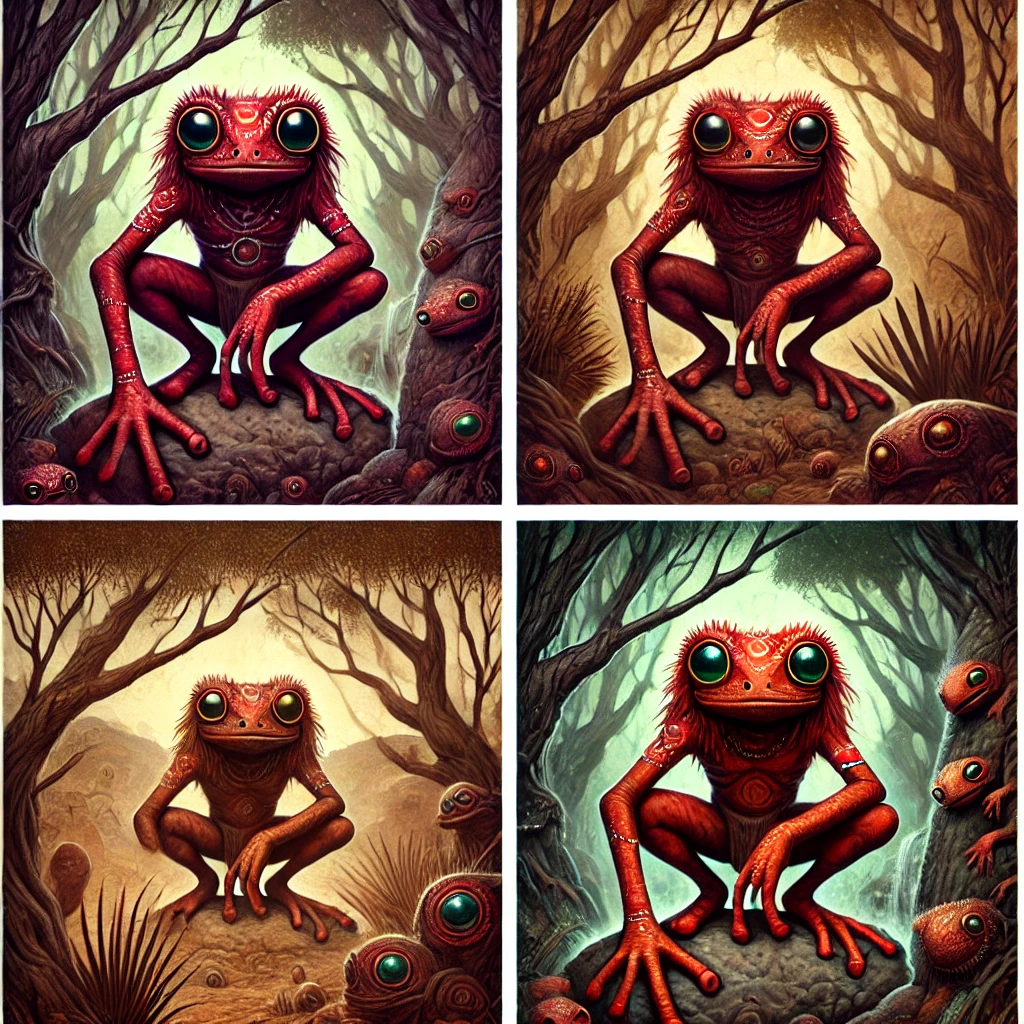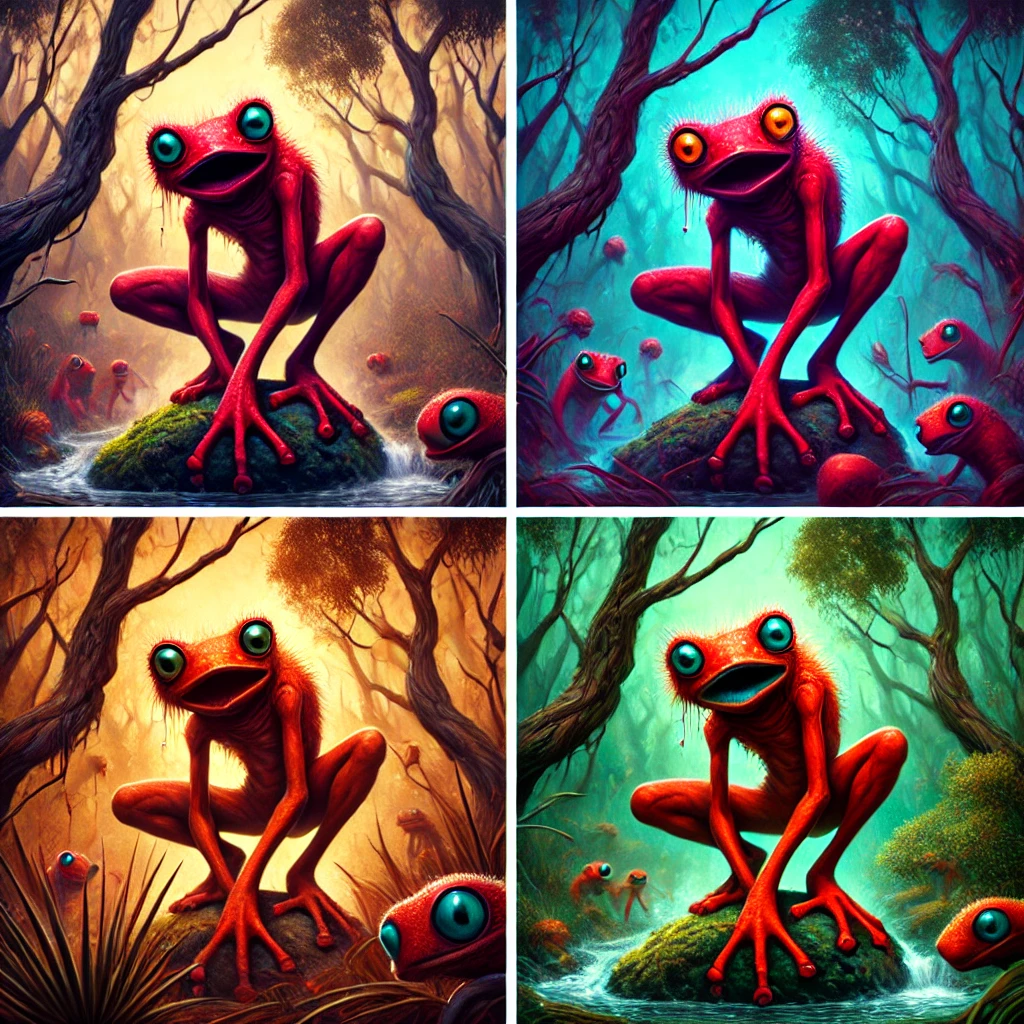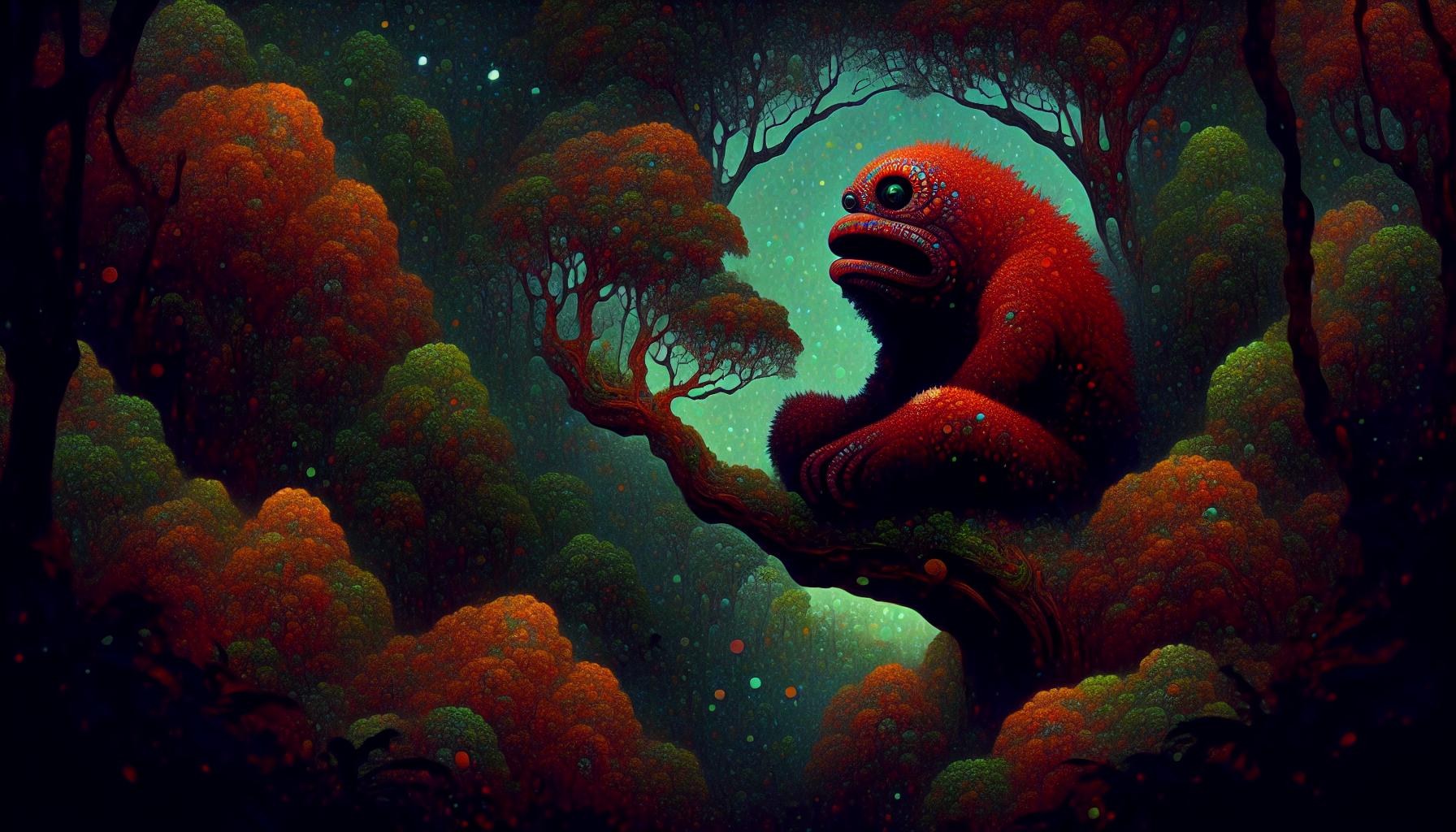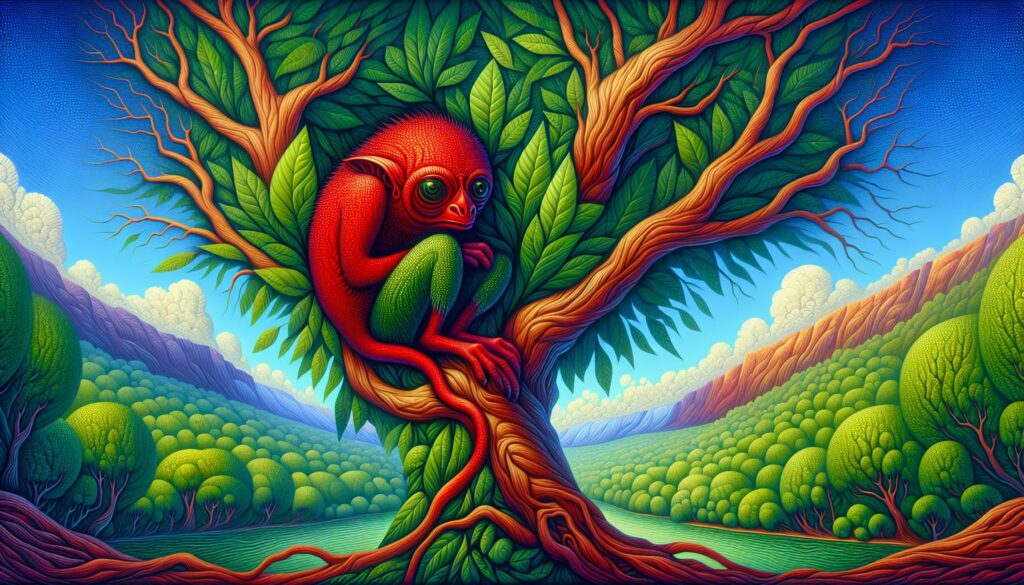Diving into the rich tapestry of Aboriginal folklore, I’m fascinated by the enigmatic figure of Yara-ma-yha-who. This unique creature stands out with its distinctive appearance and intriguing tales that have been passed down through generations. Understanding Yara-ma-yha-who offers a glimpse into the cultural heritage and storytelling traditions of Indigenous Australians.
As I explore the legends surrounding Yara-ma-yha-who, I uncover how this figure embodies the fears and values of the communities that share these stories. From its vampire-like traits to its clever methods, Yara-ma-yha-who serves as both a cautionary tale and a symbol of resilience. Join me as we unravel the mysteries of this captivating character and its significance in Aboriginal mythology.


Overview Of Yara-ma-yha-who
I delve into the Yara-ma-yha-who, a legendary vampiric entity in Southeastern Australian Aboriginal mythology. This creature embodies rich cultural narratives and serves as a significant figure in indigenous folklore.
Origins In Aboriginal Folklore
The Yara-ma-yha-who originates from Southeastern Australian Aboriginal communities. It is a central figure in oral traditions, reflecting indigenous beliefs and the relationship with nature[^1]. The myth has been passed down through generations, preserving cultural heritage and storytelling practices.
Cultural Significance
The Yara-ma-yha-who is depicted as a small, red-skinned being, roughly four feet tall, with a large head and no teeth. It features suckers on its hands and feet, and its skin appears moist and sticky[^3][^4][5]. Living in fig trees within dense forests and remote areas, the creature ambushes travelers by dropping from its habitat. It drains blood using suckers and swallows victims whole, later regurgitating them with altered appearances. This transformation symbolizes the consequences of disrupting natural balance and serves as a caution against venturing into dangerous territories. The Yara-ma-yha-who thus reinforces community values, promoting respect for the environment and vigilance among individuals.
Characteristics And Attributes
The Yara-ma-yha-who embodies the intricate relationship between Aboriginal Australians and their natural environment. It serves as both a symbol of nature’s mysteries and a cautionary figure within folklore.
Appearance And Physical Traits
The Yara-ma-yha-who stands approximately four feet tall with vibrant red skin. It possesses a disproportionately large head and a wide mouth that stretches nearly from ear to ear. Some descriptions note the absence of teeth, enhancing its eerie appearance.
Powers And Abilities
The Yara-ma-yha-who exhibits vampiric abilities, primarily feeding on the blood of unsuspecting travelers. It uses its suckers on hands and feet to immobilize prey. Additionally, the creature can blend seamlessly into fig trees, allowing it to ambush victims effectively. After draining blood, it regurgitates the individuals, often altering their appearance as a warning against disturbing the natural order.
Stories And Legends

The Yara-ma-yha-who appears in numerous Aboriginal stories, each illustrating its traits and cultural significance.
Notable Tales Featuring Yara-ma-yha-who
- The Fig Tree Guardian: This tale describes how the Yara-ma-yha-who protects sacred fig trees, deterring those who threaten the forest.
- The Night Wanderer: In this story, the creature stalks travelers at night, emphasizing the dangers of the wilderness.
- The Transformation Tale: Narratives depict victims transforming into Yara-ma-yha-who after repeated encounters, highlighting themes of change and adaptation.
- Balance with Nature: Represents the need to maintain harmony with the environment.
- Consequences of Disruption: Serves as a warning against actions that unsettle the natural order.
- Resilience and Survival: Illustrates the strength and adaptability required to thrive in harsh conditions.
Yara-ma-yha-who In Modern Culture
The Yara-ma-yha-who has transcended its Aboriginal folklore origins, influencing various aspects of modern culture. In literature, authors incorporate this creature to add depth and diversity to their narratives. For instance, in contemporary fantasy novels, the Yara-ma-yha-who often appears as a symbol of transformation and resilience.
In film and television, the Yara-ma-yha-who serves as a unique antagonist, offering a fresh alternative to traditional vampire myths. Its distinctive appearance and modus operandi provide filmmakers with creative opportunities to explore indigenous mythology on screen. Notable examples include its portrayal in Australian horror films, where it embodies the untamed wilderness and indigenous fears.
The creature also features prominently in video games, enhancing the mythical elements of game worlds. Games like “Aboriginal Legends” incorporate the Yara-ma-yha-who as both a foe and a cultural emblem, enriching the player’s experience with authentic folklore.
Artistic representations of the Yara-ma-yha-who appear in paintings and sculptures, celebrating Aboriginal heritage and storytelling traditions. Galleries showcasing Indigenous art often highlight this creature, emphasizing its role in cultural preservation and education.
Moreover, the Yara-ma-yha-who is included in various mythological encyclopedias and online databases, such as Mythologica Encyclopedia. These platforms document and share diverse mythological beings, allowing a global audience to discover and appreciate Aboriginal folklore. By featuring the Yara-ma-yha-who, Mythologica Encyclopedia promotes cultural awareness and enriches the collective understanding of world mythologies.
Overall, the Yara-ma-yha-who’s presence in modern culture underscores the importance of preserving and integrating indigenous stories into contemporary media, ensuring that these rich traditions continue to inspire and educate future generations.
Key Takeaways
- Cultural Significance: Yara-ma-yha-who is a pivotal figure in Southeastern Australian Aboriginal mythology, embodying the rich cultural narratives and traditions of Indigenous communities.
- Distinctive Traits: Characterised by its small stature, red skin, and vampiric abilities, Yara-ma-yha-who serves as a cautionary symbol against disrupting the natural balance.
- Storytelling Themes: The legends highlight important themes such as the need for harmony with nature, the consequences of ecological disruption, and the resilience required to thrive in harsh environments.
- Modern Influence: Yara-ma-yha-who has transcended folklore, impacting contemporary literature, film, video games, and art, thereby preserving and promoting Aboriginal heritage in modern media.
- Educational Value: Exploring the tales of Yara-ma-yha-who offers valuable insights into Indigenous Australian storytelling traditions and their deep connection with the natural world.
Conclusion
Exploring Yara-ma-yha-who has deepened my appreciation for Aboriginal storytelling and its connection to nature. This fascinating creature not only captivates with its unique traits but also embodies the enduring values and resilience of Indigenous communities. Understanding its role in folklore reminds me of the importance of preserving these rich traditions and the lessons they offer about harmony and respect for the environment. Yara-ma-yha-who continues to inspire and intrigue, bridging ancient wisdom with modern interpretations and ensuring that these vital stories remain vibrant and meaningful today.
Frequently Asked Questions
What is the Yara-ma-yha-who?
The Yara-ma-yha-who is a legendary creature from Southeastern Australian Aboriginal mythology. It is depicted as a small, red-skinned being with a large head, no teeth, and suckers on its hands and feet. This vampiric entity resides in fig trees, ambushing travellers to drain their blood before regurgitating them with altered appearances.
Where does the Yara-ma-yha-who legend originate?
The Yara-ma-yha-who legend originates from Southeastern Aboriginal communities in Australia. It has been preserved through generations via oral traditions and storytelling, reflecting the indigenous people’s beliefs, values, and their deep connection with the natural environment.
What are the unique characteristics of the Yara-ma-yha-who?
The Yara-ma-yha-who stands approximately four feet tall with vibrant red skin and a disproportionately large head. It has a wide mouth without teeth and uses suckers on its hands and feet to immobilise victims. Its ability to blend into fig trees makes it an effective ambush predator, embodying both fear and respect for nature.
What cultural significance does the Yara-ma-yha-who hold in Aboriginal mythology?
In Aboriginal mythology, the Yara-ma-yha-who symbolizes the intricate relationship between people and nature. It serves as a cautionary figure against disrupting the natural balance and reinforces community values such as respect for the environment and vigilance. The creature’s stories convey lessons about maintaining harmony with the natural world.
How has the Yara-ma-yha-who influenced modern culture?
The Yara-ma-yha-who has transcended its folklore origins to influence literature, film, television, and video games. It is often portrayed as a unique antagonist, adding depth to contemporary narratives. Its depiction in various media celebrates Aboriginal heritage and promotes cultural awareness, ensuring these traditional stories inspire and educate future generations.
What are some notable stories featuring the Yara-ma-yha-who?
Notable stories include “The Fig Tree Guardian,” where the creature protects sacred fig trees; “The Night Wanderer,” highlighting the dangers of the wilderness; and “The Transformation Tale,” which narrates how victims may become Yara-ma-yha-who after repeated encounters. These tales emphasize themes of balance with nature, consequences of disruption, and resilience.
What lessons can be learned from the Yara-ma-yha-who legends?
Yara-ma-yha-who legends teach the importance of maintaining harmony with the environment, respecting natural boundaries, and being vigilant against actions that disrupt ecological balance. They also highlight the resilience required to thrive in challenging environments, reflecting the values and survival strategies of Aboriginal communities.
How is the Yara-ma-yha-who depicted in artistic representations?
In artistic representations, the Yara-ma-yha-who is portrayed with its distinctive red skin, large head, and eerie appearance. Artists celebrate Aboriginal heritage by illustrating the creature in traditional and contemporary styles, often highlighting its symbolic connection to nature and its role in cultural narratives.
Author

Josh Morley holds a Bachelor’s degree in Theology from the Trinity School of Theology and a Diploma in Theology from the Bible College of Wales. His academic journey involved interfaith community projects and supporting international students, experiences that shaped his leadership and reflective skills. Now based in Liverpool, Josh is also the founder of Marketing the Change, a digital agency specializing in web design and marketing.
View all posts





